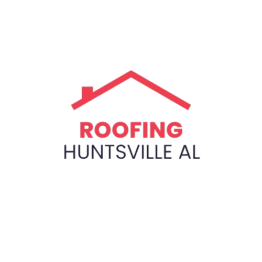What Does a Roof Inspection Consist Of?
A roof inspection is a crucial aspect of home maintenance that ensures the longevity and integrity of your roof. Regular inspections can help identify potential issues before they become significant problems, saving you time and money in the long run. But what exactly does a roof inspection consist of? Let’s dive into the details to understand the comprehensive process involved.
The Importance of a Roof Inspection
A roof inspection provides a thorough assessment of your roof’s condition, identifying any damage or wear that may need attention. This proactive approach helps prevent leaks, structural damage, and costly repairs. Additionally, a well-maintained roof can improve energy efficiency and enhance your home’s curb appeal.
Components of a Roof Inspection
A professional roof inspection typically involves several key components, each designed to evaluate different aspects of the roof. Here’s what a comprehensive roof inspection consists of:
1. Exterior Inspection
The exterior inspection focuses on the roof’s surface and structural elements. This includes:
- Shingle Condition: Inspecting for cracked, curled, or missing shingles. This assessment helps identify areas vulnerable to leaks and water damage.
- Flashings: Checking the flashings around chimneys, vents, and skylights for signs of damage or deterioration. Properly functioning flashings are essential for preventing water intrusion.
- Gutters and Downspouts: Examining gutters and downspouts for blockages, leaks, or signs of rust and corrosion. Proper drainage is crucial to prevent water from pooling on the roof.
- Roof Vents: Ensuring that roof vents are clear of debris and functioning correctly. Good ventilation helps regulate temperature and moisture levels in the attic.
- Fascia and Soffit: Inspecting the fascia and soffit for signs of rot, damage, or pest infestation. These components protect the roof’s edge and provide ventilation to the attic.
2. Interior Inspection
The interior inspection involves evaluating the condition of the attic and other internal elements. This includes:
- Insulation: Checking the insulation in the attic to ensure it is adequate and evenly distributed. Proper insulation helps maintain energy efficiency and prevent ice dams.
- Ventilation: Assessing the attic ventilation to ensure there is proper airflow. Poor ventilation can lead to moisture buildup, mold growth, and reduced roof lifespan.
- Signs of Leaks: Looking for signs of water intrusion, such as water stains, mold, or mildew on the attic ceiling and walls. Early detection of leaks can prevent extensive damage.
- Structural Components: Inspecting the roof deck, rafters, and trusses for signs of rot, mold, or structural damage. This ensures the roof’s framework is sound and secure.
3. Roof Surface Inspection
The roof surface inspection is a detailed examination of the materials and condition of the roof’s exterior. This includes:
- Granule Loss: Checking asphalt shingles for granule loss, which can indicate aging or damage from hail and other impacts.
- Blistering and Buckling: Identifying any areas where the shingles are blistering or buckling, as these can indicate underlying issues with the roof’s structure or installation.
- Moss and Algae Growth: Looking for signs of moss, algae, or lichen growth. While these may not cause immediate damage, they can lead to long-term deterioration if left untreated.
- Sealant Condition: Assessing the condition of sealants around roof penetrations and seams. Cracked or deteriorated sealants can lead to leaks.
4. Safety and Compliance
A roof inspection also ensures that the roof complies with local building codes and safety standards. This includes:
- Roof Access: Ensuring there is safe and adequate access to the roof for maintenance and repairs.
- Fall Protection: Verifying that fall protection measures, such as guardrails or anchor points, are in place and in good condition.
- Fire Resistance: Checking the roof materials for proper fire resistance ratings, especially in areas prone to wildfires.
When to Schedule a Roof Inspection
Regular roof inspections should be part of your home maintenance routine. It’s advisable to schedule an inspection:
- Annually: To catch and address any issues early.
- After Severe Weather: Following a major storm, hail, or high winds to assess any damage.
- Before Buying or Selling a Home: To ensure the roof’s condition is fully disclosed and factored into the property’s value.
- If You Notice Issues: Such as leaks, missing shingles, or sagging areas.
Choosing a Professional Roof Inspector
Hiring a qualified and experienced roof inspector is essential for a thorough and accurate assessment. Look for inspectors who:
- Are Certified: By reputable organizations like the National Roof Certification and Inspection Association (NRCIA).
- Have Experience: In inspecting the specific type of roof on your home.
- Provide Detailed Reports: Including photographs and clear explanations of any issues found.
Conclusion
Understanding what a roof inspection consists of can help you better appreciate the importance of this essential maintenance task. By regularly inspecting your roof and addressing any issues promptly, you can extend its lifespan, prevent costly repairs, and maintain the overall health of your home. Whether you’re a homeowner looking to protect your investment or a buyer ensuring a sound purchase, a comprehensive roof inspection is a crucial step in safeguarding your property.
